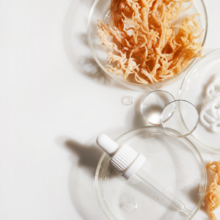Step Away from the Salt Shaker: The Truth About Sodium
- Published: Sunday, January 18th 2015
- in Nutrition
In our newest series “The Truth About…” we’ll be unveiling some facts about some controversial ingredients in food and product! To kick things off we’re starting with something we all have have home and perhaps are all guilty of using a little too much of… salt!
by James Kenney, PhD, RD, FACN Nutrition Research Specialist and Educator, Pritikin Longevity Center + Spa
Every now and then, the media in the U.S. zeroes in on a new study (invariably a poorly designed one) that questions the need to lower our salt (sodium-chloride) intake.
That’s unfortunate. I have been following the scientific literature on salt intake and health risks for more than 40 years. It is part of my responsibility as Nutrition Research Specialist at the Pritikin Longevity Center and as author of courses on salt intake approved by the American Dietetic Association for Continuing Professional Education (CPE) credit for registered dietitians. My decades-long research has led me – and the vast majority of nutrition scientists – to conclusions about salt intake that are the opposite of the “salt is okay” hoopla we sometimes hear from the media and salt industry lobbyists. The following are the science-based facts about excessive salt consumption.
Excess salt intake leads to hypertension
An overwhelming body of research has found that a high-salt diet leads to high blood pressure, or hypertension, which leads to heart attacks, strokes, kidney failure, dementia, erectile dysfunction, and other chronic or life-threatening conditions. Hypertension is the most commonly diagnosed cardiovascular disease in America, affecting about 67 million adults. That’s 1 in every 3 adults in America.[1] Hypertension is also the #1 risk factor for the approximately 800,000 strokes Americans suffer each year. Elevated blood pressure is also responsible for about half of all deaths from heart disease.
This toll on health occurs despite the fact that hypertension can largely be prevented and/or reversed simply by changing our diet and lifestyle. Leading the list of lifestyle changes should be cutting down on salt intake.
Less than 1,500 mg of sodium daily
According to recommendations by leading U.S. health organizations like the American Heart Association (AHA),[2] the majority of Americans should consume no more than 1,500 mg of sodium a day. But on average we consume more than double that – about 3,500 mg of sodium daily.
Recent research[3] by scientists at the University of California, San Francisco, underscored the life-saving benefits of cutting salt intake. Using mathematical models, they determined that reducing Americans’ sodium consumption from current levels to 2,300 mg daily would save 500,000 to 850,000 lives over the next decade, largely by reducing heart attacks and strokes related to hypertension.
1.2 million lives saved
The scientists also estimated that reducing sodium intake to 1,500 mg daily, as recommended by the Pritikin Program and public health authorities like the AHA and the Institutes of Medicine, would save up to 1.2 million lives over the next decade.
DASH research
Well-designed trials have also proven the benefits of reducing sodium intake. Scientists from the National Institutes of Health, for example, put people on the DASH diet (Dietary Approaches To Stop Hypertension). Like the Pritikin Program, DASH is low in sodium as well as fats, cholesterol, red meat, and sweets; high in fruits, vegetables, whole grains, and beans; and moderate in fish, poultry, nuts, and low-fat or nonfat dairy foods.
The NIH researchers found that eight weeks of DASH eating resulted in reductions in blood pressure in all groups of men and women studied. Even those with normal blood pressure (systolic pressure less than 120) had a small drop.
In another part of the DASH investigations, three groups of people were directed to follow the DASH diet, but with varying levels of sodium intake (3,300, 2,400, or 1,500 mg a day). The researchers found that the biggest drops in blood pressure occurred in the group on the 1,500 mg-of-sodium-a-day diet.[4]
Pritikin research
Studies on people with high blood pressure who came to the Pritikin Longevity Center, which has been teaching healthy living skills since 1975, have also demonstrated the benefits of a low-sodium diet. Tracking 1,117 adults with hypertension, scientists at UCLA found that blood pressure was reduced to normal or near-normal levels, and within three weeks of starting the Pritikin Program. Moreover, the majority of those who came to Pritikin taking blood pressure pills no longer needed them upon return home.[5] In effect, healthy Pritikin living, in and of itself, was doing an excellent job of keeping blood pressure down.
“Salt tooth”
But people are slow to change, and there’s a reason for that. Most develop what I often describe as a “salt tooth.” They’ve been eating mega-amounts of salt for so long that when salt is dramatically reduced, their taste buds struggle to perceive the tastes and flavors of anything else. Everything tastes “blah.” That’s why in-residence health retreats like Pritikin – and its low-salt environment – are so important. In addition to physician supervision, exercise training, and lifestyle education, Pritikin gives people time away from salt so that their palates have a chance to rediscover the good flavors of good food.
Have an ingredient you want to learn the truth about? Share it in the comments below!
[1] CDC. Vital signs: awareness and treatment of uncontrolled hypertension among adults—United States, 2003–2010. MMWR. 2012;61(35): 703.
[2] http://www.heart.org/HEARTORG/Conditions/HighBloodPressure/PreventionTreatmentofHighBloodPressure/Shaking-the-Salt-Habit_UCM_303241_Article.jsp
[3] Hypertension, 2013; 61: 564.
[4] New England Journal of Medicine, 2001; 344: 3.
[5] Journal of Applied Physiology, 2005; 98: 3.
You may also like:



